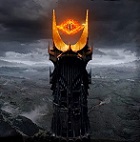BletchleyGeek
Posts: 4713
Joined: 11/26/2009
From: Living in the fair city of Melbourne, Australia
Status: offline

|
quote:
ORIGINAL: PeeDeeAitch
quote:
ORIGINAL: Rafo
Actually, as Betchley wrote, the main problem with the rules (at least in 41) is that it allows the Germans to make pockets with thin air by converted hex. The cost of ennemy hex is not much for the German motorized units, but very few Soviet units can cross 3 hex of empty "ennemy" land in their own country, even if the first German is 100 km away.
In my Opinion, the cost of empty ennemy territory should not depend on moral at all. After all, it isn't truly ennemy. Maybe the game need a special status for "no man's land" hexes.
This really isn't true. A cavalry outside of the converted region can get 1 or often 2 hexes into the conversion, a division inside can easily get at least up next to the conversion (if not 1 hex into it). The huge swath of converted is rather easily broken, even a pretty good defended pocket is broken if the German is not careful.
What the large Axis movement does do is make the Soviet have to defend in depth, to slow down such armor exploitation (which they really should be doing on defense anyway).
Sure that's the idea PDH. The problem is to implement and have a decent chance:
1) Linear formation, two hexes deep? That's a 20 miles deep deployment, and it's not much more than a mere speedbump.
2) Linear formation, hedgehog behind? Works better, surely, but it's hard to keep a sealed line and a hedgehog deep enough to contain a breakthrough six hexes deep behind your lines (that's 60 miles).
3) Full hedgehog, three rows, a total of 7 hexes deep area covered with ZOC (that's 70 miles deep!)? That used to work, but no more, since now Motorized Units enter ZOC quite cheaply. It only takes some thought to figure out how to use retreat rules into your favor, and presto, units herded into destruction.
Your example with the cavalry units is also spot on, just the same problem with the sides changed. The difference is that 1941 Cav Divisions don't have the firepower to dislodge even a PzDiv low on fuel with a deliberate attack, let alone a hasty attack. In 1942 two stacked Cavalry Corps perhaps will be able to a similar thing, but those means are certainly out of anyones' reach in 1941. Reaction rules would allow tactics such as protecting a spearhead by deploying units in reaction mode at the base of the spearhead. I'm pretty sure this will come in handy for the Axis side in 1941 and 1942. Beyond 1942, would also very useful to "contain", not fight back, Soviet breakthroughs.
I don't want to sound as the guy on the right hand side of this picture
by insisting so much, but I really think that some of the "extreme strategies" we have to implement have a lot to do with this issue. I don't think it will do any harm thinking a bit on the causes for having to conduct such "extreme strategies", rather than entering a neverending tweak, rollback, tweak, rollback, tweak, etc.
_____________________________
|
 Printable Version
Printable Version


















 New Messages
New Messages No New Messages
No New Messages Hot Topic w/ New Messages
Hot Topic w/ New Messages Hot Topic w/o New Messages
Hot Topic w/o New Messages Locked w/ New Messages
Locked w/ New Messages Locked w/o New Messages
Locked w/o New Messages Post New Thread
Post New Thread